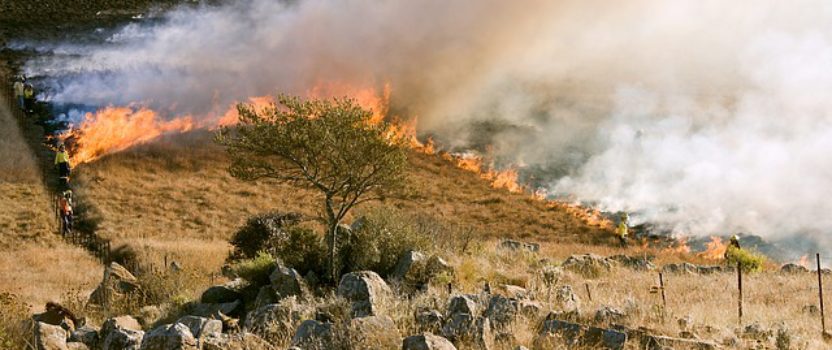Post 6|2016
I’m sorry I had to delay this post by a week but we offered to take a ‘quick’ road trip to Darwin, a total of 3,634 kms according to Google maps! The task at hand was to deliver our nephew’s car to him and then fly home. Definitely not a low carbon trip but a trip of kilometer after kilometer of truly stunning landscapes, that I hadn’t seen before. In the week prior to our Darwin road trip, we were on the east coast of Tasmania enjoying week one of the three to four weeks of holidays that we try to schedule annually. Unfortunately, the predominant theme that links each of these travel experiences was fire.
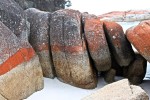 Three days into our Tasmanian holiday, we were at the Bay of Fires in Tasmania, so named for the beautiful orange lichen on the rocks that frame the equally beautiful white sand beach and THS received a phone call. THS didn’t know the caller but the caller wanted to know where the key to the tractor was so the tractor could be moved out-of-the-way of the fire, that was bearing down on the farm. Simultaneously, I saw that I had missed a text message from a friend checking that I knew there was a fire in the area and I also saw that I had missed an update from the ‘Fire Ready’ app telling me there were a number of fires within 15 ks of the house (the house and the farm are on separate properties).
Three days into our Tasmanian holiday, we were at the Bay of Fires in Tasmania, so named for the beautiful orange lichen on the rocks that frame the equally beautiful white sand beach and THS received a phone call. THS didn’t know the caller but the caller wanted to know where the key to the tractor was so the tractor could be moved out-of-the-way of the fire, that was bearing down on the farm. Simultaneously, I saw that I had missed a text message from a friend checking that I knew there was a fire in the area and I also saw that I had missed an update from the ‘Fire Ready’ app telling me there were a number of fires within 15 ks of the house (the house and the farm are on separate properties).
While THS was dealing with farm related issues, I managed to get hold of our house sitter, the ever sensible LW. It turns out that she hadn’t been aware of the fires, because the y were coming from the west, and we don’t have any west-facing windows, but a mutual friend had texted her to check she knew. LW was in the process of evacuating (thank goodness, even though the message hadn’t come through to do so at that point). We had a fire plan which I had casually shared with her prior to our departure, never really thinking she would need to activate it. She loaded up the dogs into the truck and was able to capture one cat but the other disappeared. While she was doing this, and talking to our nearest neighbor about her plans, she had turned on the garden watering system to saturate the mulch around the house. I asked her to collect one file from my office and turn off the water prior to leaving, so there would still be water in the tank if it was needed by fire fighters (our tank has a quick connect fire access valve). LW said that she had been asked to take the neighbor’s old dog as well as ours, so he was loaded into the truck with the others. I gather that the flames weren’t visible just lots and lots of smoke, as well as noise from the wind. In the end our house and the missing cat were OK and LW was able to return 24 hours later. The farm only suffered about two tennis courts worth of burnt pasture from an ember attack but others lost a lot of pasture and fences. At least one house was burnt down and so many trees are black skeletons standing in a sea of yet more dense black; all the undergrowth has gone.
y were coming from the west, and we don’t have any west-facing windows, but a mutual friend had texted her to check she knew. LW was in the process of evacuating (thank goodness, even though the message hadn’t come through to do so at that point). We had a fire plan which I had casually shared with her prior to our departure, never really thinking she would need to activate it. She loaded up the dogs into the truck and was able to capture one cat but the other disappeared. While she was doing this, and talking to our nearest neighbor about her plans, she had turned on the garden watering system to saturate the mulch around the house. I asked her to collect one file from my office and turn off the water prior to leaving, so there would still be water in the tank if it was needed by fire fighters (our tank has a quick connect fire access valve). LW said that she had been asked to take the neighbor’s old dog as well as ours, so he was loaded into the truck with the others. I gather that the flames weren’t visible just lots and lots of smoke, as well as noise from the wind. In the end our house and the missing cat were OK and LW was able to return 24 hours later. The farm only suffered about two tennis courts worth of burnt pasture from an ember attack but others lost a lot of pasture and fences. At least one house was burnt down and so many trees are black skeletons standing in a sea of yet more dense black; all the undergrowth has gone.
And so to the linking theme. While we toured the east cost of Tasmania, there was constant evidence of fire activity. In the case of Tasmania, the skeletal black trees, some of which seemed to have faded to grey, were like monuments emerging from wreathes of new green growth surrounding their bases. When I asked a couple of people about the fires, they responded by commenting on recent heavy rains that had damaged roads and crops. Now I have come home, I realize that the fires I was seeing evidence of occurred in 2006; 10 years ago and the recovery is still not complete, while the south-east coast of Tasmania lived through five months of ongoing bush fires in 2012/13 and now, in 2016, the west coast is alight.
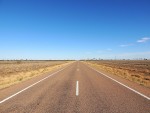 Inevitably, we saw considerable evidence of fire throughout central Australia. These fire couldn’t be fought in any meaningful way; it is too vast out there. Fortunately, although parts of the road were burnt on both sides, we didn’t have to drive through any actual fire while we were on our road trip.
Inevitably, we saw considerable evidence of fire throughout central Australia. These fire couldn’t be fought in any meaningful way; it is too vast out there. Fortunately, although parts of the road were burnt on both sides, we didn’t have to drive through any actual fire while we were on our road trip.
So, are were experiencing more fires in Australia and, if so, can the increase be linked to climate change? The Climate Institute answers yes to both questions.
Interesting Reading (helping me to understand what a Low Carbon Life might be) ….
Sustainability is a word that is used a lot; sometimes ‘sustainability’ is talked about as a self-evident good; sometimes it is talked about as a measure of naivety; sometimes it is used in a well-considered way. As those who have read this blog more than once are probably aware, I have a lot of respect for articles written by Richard Heinberg whose work was introduced to me by the very knowledgeable HC of the Plea Network. Recently he wrote a quite lengthy piece about concepts in sustainability. As always, I found it very readable, very interesting and quite inspiring.
Projects (new initiatives leading towards a Low Carbon Life) ….
This fortnight work started on:
- The Roof Vent Project. The purpose of this project is to find out if adding one or more roof vents to our house will reduce the extent to which the house heats up in summer.. Read more …
This fortnight more work was done on:
- The Window Film Project. So far I have learnt that doubling glazing does not stop the sun heating up the inside of our house. Read more …
Incidents (domestic maintenance leading towards a Low Carbon Life) ….
This fortnight more work was done on:
- The Range-hood Incident. So far I have learnt even more about patience. Read more …
- The Faulty Inverter Incident. So far I have learnt that poor quality power supply can have a negative effect on inverters. Read more …
Really ….
Back in December last year, a widely publicized article appeared that told us eating lettuce was worse for the environment than eating meat. 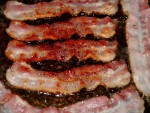 I was stunned but didn’t have time to look at the detail. I felt sure it would be one of those articles that inappropriately used measurement scales to present an inaccurate picture. Today, I went looking for that article and all I could find were a series of other articles explaining why the headline misrepresented the truth, although some of them didn’t make this conclusion clear until the end of their piece.
I was stunned but didn’t have time to look at the detail. I felt sure it would be one of those articles that inappropriately used measurement scales to present an inaccurate picture. Today, I went looking for that article and all I could find were a series of other articles explaining why the headline misrepresented the truth, although some of them didn’t make this conclusion clear until the end of their piece. 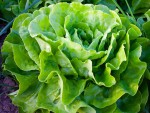 It turns out that the original misrepresentation was about measurement scales; a calorie of lettuce compared with a calorie of meat and how much water it took to grow both and the amount of emissions produced. Waste was also built into the measurements as well as harvest, storage and transport and all within the US context. Phew! I’ll continue to eat lettuce and not eat meat.
It turns out that the original misrepresentation was about measurement scales; a calorie of lettuce compared with a calorie of meat and how much water it took to grow both and the amount of emissions produced. Waste was also built into the measurements as well as harvest, storage and transport and all within the US context. Phew! I’ll continue to eat lettuce and not eat meat.
Until next time, Jane

